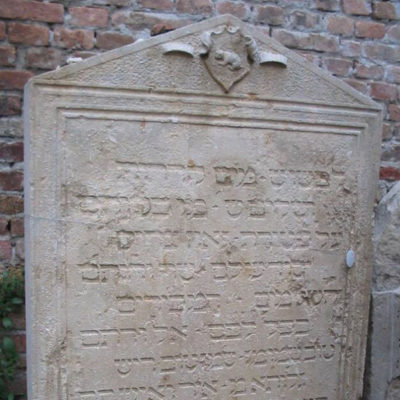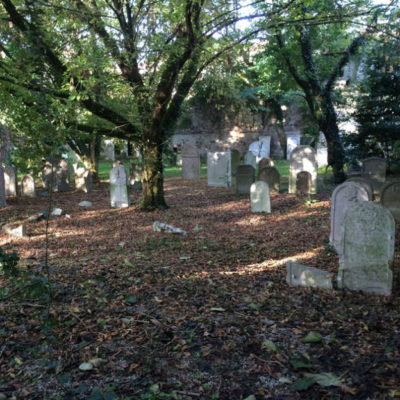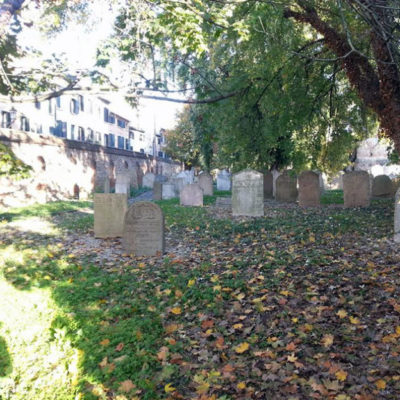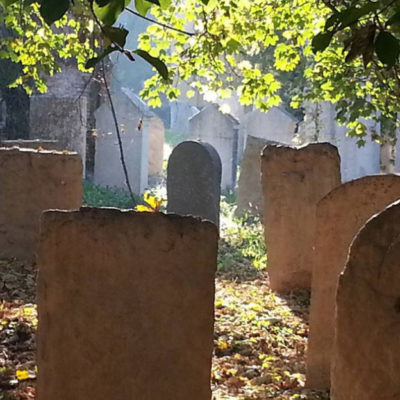This cemetery, which was in use until the early 18th century, was originally smaller and only occupied the area opposite the current entrance. The old passage through the perimeter wall, now bricked-in, can still be made out on Via Campagnola. In 1653, Rabbi Salomone Marini had the burial ground expanded, so that it reached what is now called Via Wiel.
It contains sober, often gravestones, many of which have been corroded over time. One of the oldest of them is the tomb of Rabbi Meir Katzenellenbogen (Prague 1482 – Padua 1565). Also known by the name MaHaRam, he occupied the rabbinical seat of Padua but also played a leading role for all of the region’s Jewish communities. His tomb stands alongside that of his son Samuel, who worked mainly in Venice. Both tombstones are engraved with the image of a cat, the family’s emblem.
Other Jewish cemeteries, which cannot at present be visited, are situated in the same area; that is undoubtedly the reason why part of what is now Via Campagnola used once to be known as Contrada di Borgo Zodio.
Via Isidoro Wiel, 24 (corner of Via Domenico Campagnola)
Guided tours can be booked through the Museum of Jewish Padua




